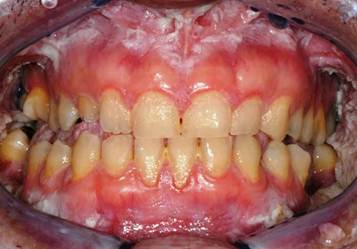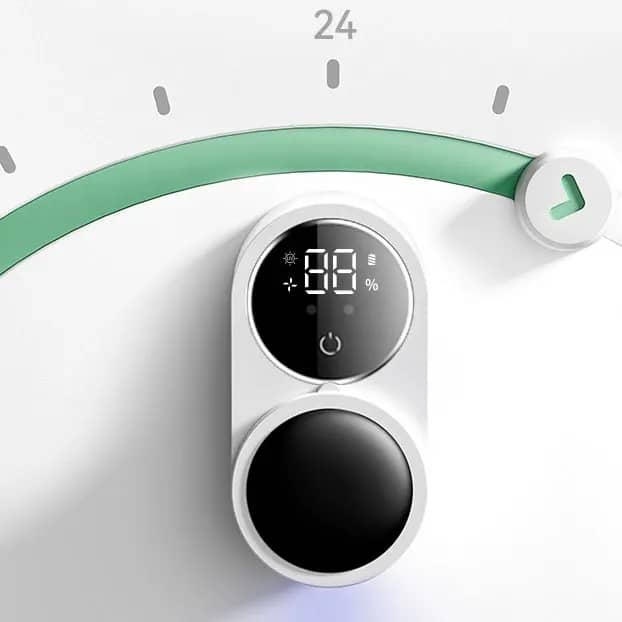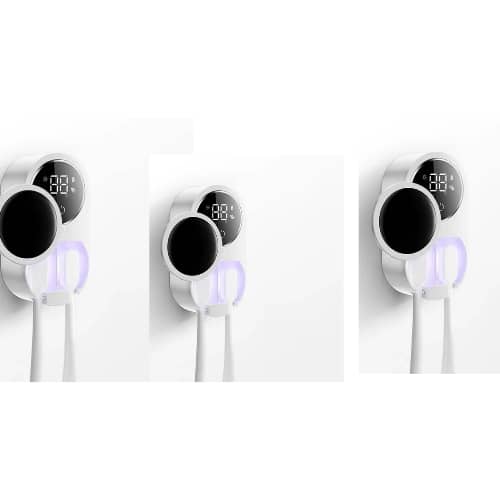- Bacterial Contamination: Exposed toothbrushes collect harmful bacteria like E. coli, Staphylococcus, and Salmonella from the surrounding environment, especially in bathrooms.
- Insect Infestation: Cockroaches, ants, and other pests are attracted to toothbrushes, leaving behind bacteria and germs from dirty surfaces they’ve crawled on.
- Cross-Contamination: Storing toothbrushes too close together can lead to the transfer of germs between brushes, increasing the risk of infections for everyone in the household.
- Mold and Mildew Growth: A damp toothbrush is a breeding ground for mold and mildew, which can cause respiratory issues and allergic reactions.
- Risk of Gum Infections: Contaminated brushes can introduce harmful bacteria into your mouth, leading to gum diseases like gingivitis and periodontitis.
- Respiratory Problems: Bacteria from an exposed toothbrush can travel to your throat and lungs, causing respiratory infections or aggravating existing conditions.
- Threat to Family Health: One contaminated toothbrush can expose the entire household to illnesses, especially when hygiene habits are compromised.
If Your Toothbrush Looks Like This video, You’re Exposing Your self and Family to Dangerous Diseases Stop the Risk Before It’s Too Late!”
Have you ever stopped to think about what happens to your toothbrush when it’s left exposed?
That small, everyday item could be silently exposing you and your loved ones to life-threatening diseases. Worse still, it might be harboring bacteria brought in by cockroaches and other insects crawling over it when you’re not watching.
Yes, you read that right. Cockroaches and other pests are drawn to toothbrushes, leaving behind harmful bacteria such as E. coli, Salmonella, and Staphylococcus aureus. These germs can easily transfer into your mouth, putting your entire family at risk for dangerous infections and illnesses.
This is A Patient Suffering From Mouth Infection From Toothbrush.

Don’t Let It Get To This, Don’t Expose Yourself To This Level Of Health Danger, Get help, Now, Prevention Is Better Than Cure.
Dangers of Exposing Your Toothbrush
Every day, countless individuals step into their bathrooms and unknowingly place their health at risk with a simple act using an exposed toothbrush.
That toothbrush, an essential tool for cleanliness, can become a silent carrier of harmful bacteria and pests. Invisible dangers like E. coli, Salmonella, and even germs from cockroaches lurking in the shadows threaten the safety of your entire family.
It’s a story many don’t realize they’re a part of. A story of toothbrushes contaminated by insects, polluted bathroom air, and improper storage. And with each use, the risk grows compromising oral hygiene, inviting infections, and creating a gateway for disease.
The fight for a healthier, safer oral care routine is not new. It’s filled with manual efforts to clean toothbrushes, makeshift storage solutions, and endless cycles of worry. Yet, it often ends with frustration and acceptance that this is just how it is.
But it doesn’t have to be this way.
INTRODUCING THE ELECTRIC MOTION SENSOR TOOTHBRUSH DISINFECTANT.

Say goodbye to germs and bacteria with our cutting edge disinfectant technology. Designed to fit seamlessly into your daily routine, this device uses UV light and advanced sterilization methods to eliminate 99.9% of harmful microbes from your toothbrush in just minutes.
INTELLIGENT SENSING AUTOMATIC OPENING AND CLOSING
It’s like having a little bit of advanced technology mixed with a touch of everyday convenience, all in one sleek device. Our Electric Toothbrush Disinfectant combines cutting edge UV sterilization with smart, user-friendly design to ensure your toothbrush is as clean and fresh as it can be effortlessly.
Protect your oral health with the perfect blend of innovation and practicality. It’s not just a gadget; it’s peace of mind for you and your family.

SEE OUR THE ELECTRIC TOOTHBRUSH DISINFECTANT IN ACTION.
Benefits of Using the Electric Toothbrush Disinfectant
- Eradicates Bad Breath Say goodbye to unpleasant odors caused by bacteria buildup on your toothbrush. Enjoy fresher breath every day.
- Improves Oral Hygiene Eliminates 99.9% of germs, ensuring a cleaner toothbrush and healthier mouth.
- Protects Against Infections Reduces the risk of gum infections, cavities, and other oral health issues caused by harmful microbes.
- Easy to Use and Portable Designed for convenience, this compact device is perfect for home use or travel.
- Rechargeable and Long-Lasting No need to worry about power outages—its rechargeable battery ensures long-lasting performance.

Take the step toward healthier smiles for you and your family!

This electric toothbrush disinfectant dives deep into your oral hygiene routine, targeting harmful bacteria and germs that cling stubbornly to your toothbrush bristles.
With regular use, you’ll notice fresher breath and a cleaner mouth, as if the disinfectant is working tirelessly to protect your health from within.
It’s not just about cleaning it’s about truly eradicating harmful microbes, ensuring your toothbrush is a safe tool for oral care.
It’s like giving your oral hygiene a boost, protecting against the buildup of bacteria that can lead to bad breath and infections.

See what people have this to say...

“I’ve been using the UV-Dry Toothbrush Sterilizer PRO for a few weeks now, and I can’t believe how I lived without it before. The UV-C sterilization technology gives me total peace of mind, especially as someone who’s always concerned about hygiene. The wall-mounted design saves space in my small bathroom, and the LED display is a big plus, showing everything I need to know. It not only protects my oral health but also adds a modern touch to my bathroom. Highly recommend it to anyone!.”
Oluchi Patrick., Anambra

“As a mom of two young kids, I’m always looking for products that are both effective and safe for my family. The Holder Tooth Brush Sanitizer UV not only keeps our toothbrushes clean but also prevents cross-contamination thanks to the separate compartments. I love the USB Type-C charging—one charge lasts so long, making it super convenient for travel. This product perfectly combines functionality and design. If you’re considering it, go for it—you won’t regret it!.”
Bolu Kate., Ibadan

“As someone who travels frequently for work, this product has become an essential companion! The automatic sterilization every 3 hours completely won me over—I don’t always remember to clean my toothbrush, but this device handles it for me. The smart sensor is incredibly impressive; just wave your hand near it, and the lid opens automatically. Knowing my toothbrush is always protected from bacteria gives me peace of mind. Truly a worthy investment.”
Mr Mark N., Benin
“My husband used to get gum infections frequently, and we couldn’t figure out why. This disinfectant has made such a difference. Now, his toothbrush is germ-free, and he hasn’t had any issues since.”
Fatima S., Kaduna
“I love that this device is rechargeable. I don’t have to worry about power outages; it keeps working perfectly. I’ve already recommended it to my friends.”
Bolaji K., Lagos
“With three kids, I always worry about their hygiene. This disinfectant makes sure their toothbrushes are clean and safe. It’s easy to use and gives me peace of mind.”
Mrs. Amaka N., Port Harcourt
HOW TO USE

How to Use the Electric Toothbrush Disinfectant
Prepare Your Toothbrush
Remove any toothpaste residue from your toothbrush by rinsing it thoroughly.Insert the Toothbrush
Place the toothbrush head into the disinfectant chamber. Ensure it fits securely.Activate the Device
Close the lid and press the power button. The UV sterilization process will begin automatically.Wait for Completion
The device will disinfect your toothbrush in approximately 5 minutes. A light indicator will signal when the process is complete.Use with Confidence
Remove your toothbrush, now clean and germ-free, ready for use!
Tips for Best Results:
- Disinfect your toothbrush after every use to maintain optimal hygiene.
- Keep the device in a cool, dry place for long-lasting performance.
- Recharge the device regularly to ensure uninterrupted use.
Transform Your Oral Hygiene with the Electric Independent Toothbrush Disinfectant
SELECT YOUR PACKAGE BELOW





How we work
Place Your Order
You can Place an Order by Filling the Order form here or you can Order via our WhatsApp @ 08038855311.
We Confirm Your Order
You will receive a call from our Sales representative to confirm your order within few minutes.
We deliver your Package
Your Package is then sent out for delivery and dellivered within 1-3days. Then you make payment when you recieve your package.
Place Your Order Here
Kindly Fill in the form below to place your Order.
PLEASE NOTE: Before filling the Order form, make sure you are ready to recieve your package and pay at the point of delivery.
